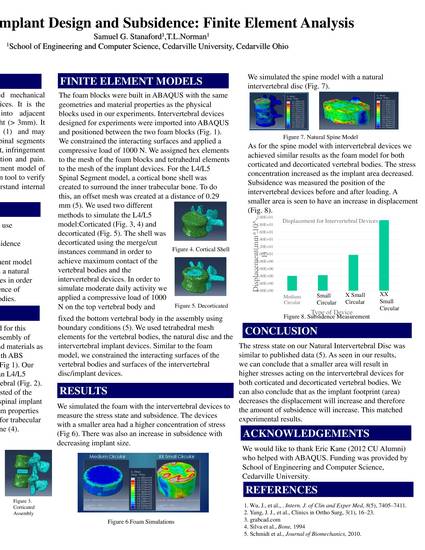
Presentation
Spinal Implant Design and Subsidence: Finite Element Analysis
The Research and Scholarship Symposium (2013-2019)
Type of Submission
Poster
Disciplines
Keywords
- FEA,
- Abaqus,
- SolidWorks
Abstract
Artificial disc replacement and intervertebral fusion devices are alternatives to pain and spinal instability when disc failure occurs. Understanding the mechanical performance of these devices can be achieved by long term clinical studies, costly experimental studies or through numeral analysis using finite elements. This study was conducted to study the subsidence, or vertical motion of the artificial disc or fusion device into adjacent vertebral body segments. Specifically, the effect of implant size, shape and sagittal profile was studied using a finite element model of the L4/L5 human spine using ABAQUS finite element software. Results compared the stress state and subsidence across spinal implant design parameters investigated.
Campus Venue
Stevens Student Center
Location
Cedarville, OH
Start Date
4-20-2016 11:00 AM
End Date
4-20-2016 2:00 PM
Creative Commons License
Creative Commons Attribution-Noncommercial-No Derivative Works 4.0
Citation Information
Samuel G. Stanaford and Timothy L. Norman. "Spinal Implant Design and Subsidence: Finite Element Analysis" (2016) Available at: http://works.bepress.com/timothy_norman/150/
